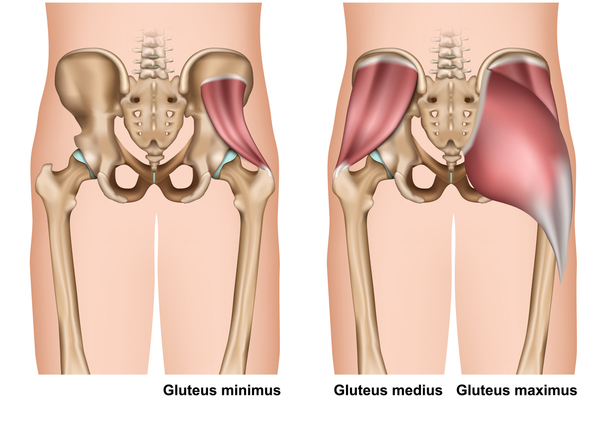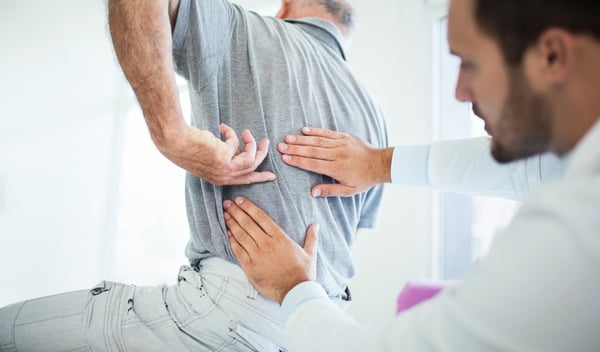
How underactive gluteal muscles can cause lower back pain
Although it may seem counter-intuitive, lower back pain can often be attributed to soft tissue impairments in the muscles surrounding the lumbar spine.
In other words, you’re not dealing with a specific lower back injury. Instead, the gluteal muscles and the piriformis muscle, which are located below the pelvis, are what’s causing lumbar pain.
Identifying the source of your pain
The glutes are composed of three muscles all layered on top of each other: the gluteus maximus, gluteus medius, and gluteus minimus. These muscles play a key role in facilitating daily activities, as they heavily influence the movement and positioning of the pelvis and lower spine.
Weak, underactive, or tight glutes can cause biomechanical imbalances in the pelvis and hips, as well as instability in the lower spine.
Tight glutes can cause as much lower back discomfort as weak glutes can, so overtraining these muscles or working in occupations that requires prolonged sitting can lead to tightness in the lower back area.

The piriformis muscle
The piriformis muscle is a muscle that can be found in the buttock area. It connects to the sacrum, the lowest part of the spine, to assist with lateral movement of the thigh and stabilizing the lower spine.
A common dysfunctional movement pattern that is prevalent in patients with lower back pain is an overactive piriformis muscle compensating for underactive gluteal muscles.
Not only can this lead to pain in the lower back area, but underactive gluteal muscles can result in other tissues in the pelvis and lower back having to absorb various forces during daily activities, such as walking.
The hip flexors
Above the pelvis, the muscles that can cause pain in the lumbar area are the hip flexors. These muscles sit lateral to the spine and the muscles of the lumbar spine.
In today’s world, human beings are sitting more than ever, and the hip flexors are forced to always be in a shortened position, leading to neural inactivity, tightness, and weakness.
There are many adverse effects that occur when the hip flexors are in this impaired physiological state. For example, the lower spine can become unstable as the muscles of the lower back area are heavily recruited to support movement, which results in fatigue.
The pelvis also becomes rotated, which can cause imbalanced movements and an imbalanced bearing of weight across joints and muscle groups.

Neural inactivity also spreads to other major weight-bearing muscles such as the glutes, which causes the body to rely on the lower back muscles to support body weight with movement.
When it comes to addressing lower back pain through rehabilitation, it’s important to remember that the muscles that support the lower back area should be both lengthened and strengthened. People often opt to either excessively stretch or excessively strengthen their muscles, which can create further problems.
If you’re experiencing lower back pain, you can visit a Lifemark clinic near you to receive treatment and learn exercise and stretching techniques to assist in your rehabilitation.



